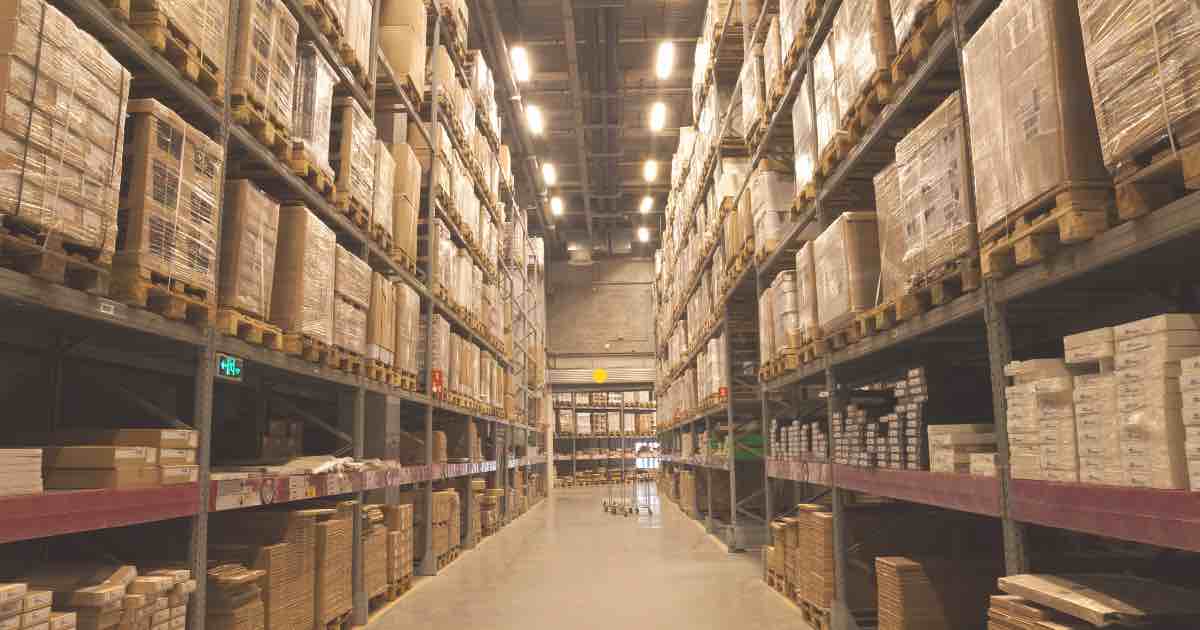Warehouse Automation: Everything You Need To Know

Technology is rapidly changing warehouse management systems by making them more efficient by augmenting human work or, in some cases, automating tedious and manual tasks.

If you're thinking about automating your warehouse, this article is for you. We'll explain the benefits of automation and some challenges you may encounter. You'll learn about various automation technologies and how to implement them.
Warehouse Automation: What Is It?
Technology is rapidly changing warehouse management systems by making them more efficient by augmenting human work or, in some cases, automating tedious and manual tasks. This way, workers can focus on completing more complex tasks. Warehouses can use automation to improve productivity and accuracy, lower personnel costs, and enhance safety. Warehouses that have implemented warehouse automation solutions may see increases in labor efficiency, product quality, inventory management accuracy, and more.
In other words, machines are not taking over or taking jobs away from human employees. Rather, businesses are leaning more into the machine's capabilities, like accuracy and lack of tiredness, to create a safer and more seamless work environment. Although some warehouses have fully-automated everything from unloading cargo to packaging, humans are still a vital element. In this article, we'll explore the various types of warehouse automation, how it works, and other processes along the way.
Digital Automation: What Is It?
In today's environment, almost every business is linked to technology. Information systems allow companies to automate manual processes to increase efficiency and profitability. Digital automation uses software and data to replace manual processes. For example, QR scanning is an instance of digital automation in the warehouse.
Some advantages of digital process automation are that it can connect to enterprise resource planning systems, more robust security, more streamlined data management, lessened operational and legal risks, and better safety.
Implementing digital automation technology has many associated costs, including hardware, software, support contracts, time and resources required for implementation, and employee training. Additionally, the increased risk of lost or corrupted data and cybersecurity threats are possible implications of implementing such technology.
Physical Automation: What Is It?
Physical automated industrial technology is used to reduce employee movement and create more efficient workflows. In a warehouse, one illustration of automated working is robots.
The upsides to physical automation in the warehouse are greater capacity and efficiency, more dependable and scalable service, along with better performance. On the negative side, there are heftier initial costs, a lack of knowledgeable workers to operate and take care of the merchandise, costing even more money down the line for upkeep, and machines can only perform very specialized tasks.
If you want to use automated warehouse systems, your business has to be reasonably planned and organized first. These types of systems work better in larger warehouses that have the room to store specialized equipment.
Warehouse Automation: How Does It Work?
Warehouse automation helps by using software and technology to automate tasks. Robotics, sensors, and other tools work together with existing inventory management software to help streamline workflows.
Warehouse automation is vital for businesses that want to meet customer demand. A warehouse management system automates various tasks and processes, including data capture and inventory control. These systems often integrate with other software solutions to streamline different business and supply chain functions.
What Can Be Automated?
The correct warehouse automation system can automate a variety of tasks that involve every aspect of order fulfillment and inventory management, including:
- Packaging: The packaging process, which includes preparing products for shipment and packing them into containers, is especially important owing to the high expense and environmental impact of packaging materials. Automated packing systems employ algorithms to determine the best sort of shipping packaging based on product features, dimensions, and material prices.
- Picking: Manual order picking is some of the most expensive and time-consuming warehouse work. GTP systems and automated mobile robots can help to quickly and efficiently move inventory from stock locations to meet consumer demand.
- Putaway: Moving items from receiving to storage is known as putaway. This procedure can also be automated, allowing for cross-docking, in which products are rapidly sorted, processed, and loaded onto trucks destined for separate locations rather than being kept in the warehouse.
- Receiving: You can use electronic devices to collect data quickly in your warehouse receiving area. Data is collected, processed, and stored using integrated software that affects downstream and upstream automated procedures.
- Restocking: When an inventory item reaches a low level, the system automatically begins the order process and sends it to be approved. Automated replenishment stops overstocking costs and causes loss of inventory due to expiration or theft.
- Returns: Return processing methods, such as robotic sorters and equipment, might be automated. Using automated methods, such as robotic sorters, is an efficient way to restock and organize shelves.
- Shipping: Automated shipping systems help businesses save time and money by automatically calculating rates, printing labels, and choosing the best carrier for each shipment.
- Sorting: In warehouses, inventory is frequently sorted and consolidated. This process often becomes confusing and time-consuming; however, automated sortation systems can easily improve human error.
Different Types of Warehouse Automation
Many warehouse automation technologies are available, each serving to Quicken different processes within a warehouse. These technologies include:
Goods-To-Person
A goods-to-person solution usually entails robots or machines that carry supplies to employees for assembly or packing. It might utilize cranes or trucks that wander the warehouse gathering items. Automated storage and retrieval systems, as well as conveyor systems, are included in GTP.
Pick-To-Light
Pick-to-light software solutions employ barcodes and LED lights to assist pickers in finding the appropriate goods to fulfill orders. Pick-to-light systems automate routine tasks, allowing pickers to find products faster.
Voice Tasking
Voice tasking or voice picking solutions integrate communication technology into the workday of a warehouse order picker. Pickers and taskers use wireless headsets in real time to coordinate movement and material handling.
Sorting
Sorting systems use various technologies to identify and separate items, directing them to specific locations for returns processing, picking zones, or packing stations.
Autonomous Mobile Robots
Some collaborative mobile robots, for example, improve picking routes and activities based on the warehouse condition and employee requirements. Collaborative mobile robots provide many advantages, including mobility, dependability, scalability, shorter walking times, and higher productivity.
Drones
Drones are mostly famous for their military applications, but they have a wide range of commercial and personal uses. Most lack advanced computers onboard; however, they can be used for tasks such as inventory management. They can also be equipped with barcode scanners to conduct inventory counts or alert warehouse staff about products that need restocking or items in the wrong storage locations. Some companies in automation warehousing are even exploring using drones for delivery purposes.
Automate Your Warehouse
A project plan is required for automating a warehouse. Stakeholders must be consulted, a project timetable must be established, and a risk assessment and objectives must be completed.
Initially, construct a support team and choose one or more project managers. They will then create a project schedule that consists of a timeline and calendar of deliverables. Afterward, develop implementation support plans with comments from every level of management.
Finally, select the warehouse automation that best suits your company's objectives, customer demand, and feedback from your team, as well as the time and resources available. When selecting automation alternatives, you'll need to research them thoroughly and request demos.
Implementation Committee
Organize an internal group of stakeholders familiar with current warehouse performance, capabilities, problems, and existing technology gaps. Consider inviting third-party experts specializing in supply chain automation and knowledgeable about your industry and warehouse operations.
Collect Data
Automating your warehouse depends on understanding your current supply chain and critical warehouse processes. Examine your present data-gathering process and infrastructure before adopting new automation technology.
Inventory Controls
Inventory control is at the heart of warehouse management. Before implementing a warehouse automation solution, determine or improve your standard operating procedures (SOPs) for inventory control. Include purchasing, shipping, receiving, client satisfaction, and stock loss as SOPs.
Warehouse Management System (WMS)
Modern warehouse management systems include software modules that assist in inventory management, distribution center operations, labor cost savings from manual activities, and customer service improvement.
Choosing Your Warehouse Automation
Is your objective to automate data entry and reduce labor costs in back-office warehouse operations like accounting and warehouse management? Or do you need to expand your warehouse space or add more locations? It may be time to use advanced physical process automation like robots. It is crucial to determine the type of warehouse automation that best suits your goals and customer demand.
Warehouse Automation Challenges
Despite the advantages of warehouse automation, it has certain drawbacks. To get started, businesses need to make a significant investment and have the knowledge to set up and maintain the system. This can be difficult to obtain. Additionally, equipment failure can occur anytime, resulting in downtime and repair and maintenance expenses.
To reduce the likelihood of future maintenance issues, set up regular maintenance schedules. Hiring a third-party vendor specializing in skilled equipment upkeep will help guarantee that your new systems continue running smoothly.
Although the high upfront costs for equipment and setup might seem like a lot, they usually pay for themselves over time through efficiencies and increased sales. However, businesses still need to be careful when planning and to anticipate potential challenges. Risk assessment is key to mitigating these potential problems down the line.
Back to the blog